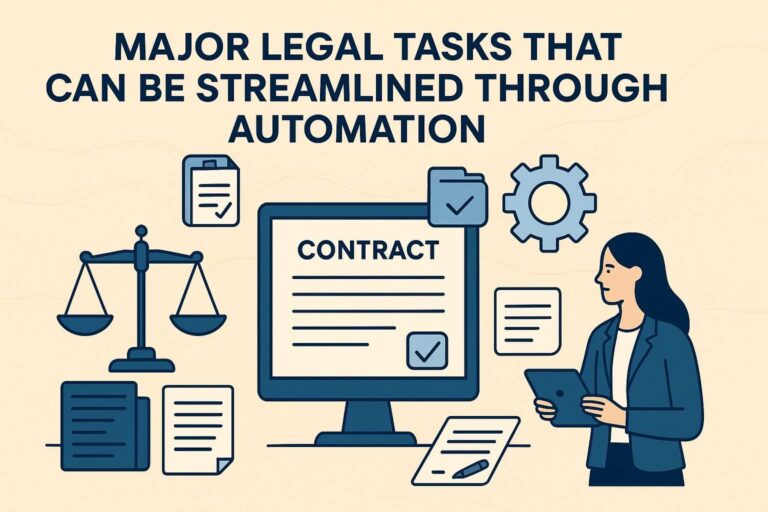Legal teams handle many detailed responsibilities each day. Contract reviews, compliance checks, and document preparation consume valuable time and attention. Manual work leads to inconsistencies, slower output, and a higher risk of mistakes. Every hour spent on repetitive tasks takes focus away from strategic legal matters.
Modern legal automation transforms this imbalance. It handles routine work with precision and consistency, giving professionals more control over their time. Automated tools help prepare contracts, organize files, and track legal obligations. This structured approach improves efficiency, accuracy, and decision-making across the department.
Contract Creation and Review
Contracts form the backbone of any organization’s legal activity. Manual drafting slows progress and creates room for inconsistency. Automation allows legal teams to generate agreements through approved templates that meet company standards. This ensures uniform language and reduces dependency on constant supervision.
Automated tools can also identify missing clauses or risky terms before final approval. These early checks limit exposure to future disputes. The result is faster turnaround and stronger contract integrity. Businesses gain reliability without compromising precision.

Compliance Management and Monitoring
Regulatory compliance demands attention to every detail. Manual tracking of new laws, licenses, and renewal dates exposes the organization to risk. Automated systems record updates and alert legal teams about upcoming obligations. This structure removes uncertainty and prevents unintentional violations.
Automation tools also prepare accurate compliance summaries for management and audits. They collect data from multiple sources and present it in one report. This consistency builds trust and ensures readiness for inspection. Legal departments gain clarity without unnecessary effort.
Document Organization and Retrieval
Legal operations generate an enormous volume of records. Managing this manually leads to misplaced files and wasted hours. Automation creates a structured digital library where documents are indexed by type, date, or party name. This framework makes retrieval quick and dependable.
Search tools allow instant access to any contract or record. Permissions ensure that only authorized personnel view confidential files. Automated systems prevent duplication and keep all data secure. Document control becomes smooth and verifiable.

Case Coordination and Task Tracking
When multiple cases are handled manually, it can cause confusion and missed deadlines. Automated case management platforms distribute tasks, assign responsibility, and monitor completion. This ensures visibility across all legal matters and promotes accountability. Every case stays on schedule, and each update is recorded.
Teams also communicate better through shared dashboards. Everyone views progress in real time, eliminating uncertainty. Collaboration strengthens as transparency increases. The result is faster resolution and improved team alignment.
Risk Detection and Contract Analysis
Legal professionals must identify exposure in contracts and operations before problems arise. Automation scans documents for missing clauses, contradictory terms, and compliance gaps. This analysis highlights weak points that require attention. The process strengthens accuracy and minimizes potential liability.
Advanced systems within legal automation platforms assess language and identify patterns linked to legal risk. They offer suggestions to improve clarity and ensure compliance. This reduces uncertainty and enhances the quality of every agreement. The organization benefits from deeper insight with far less manual effort.

Automation has redefined how legal departments manage their daily workload. It speeds up document control, contract creation, and compliance reporting while maintaining precision. Teams can focus on strategy, negotiation, and long-term planning instead of repetitive tasks. Legal automation provides structure, visibility, and consistency at every level. Businesses that embrace this approach achieve faster results, reduced risk, and stronger operational control.

